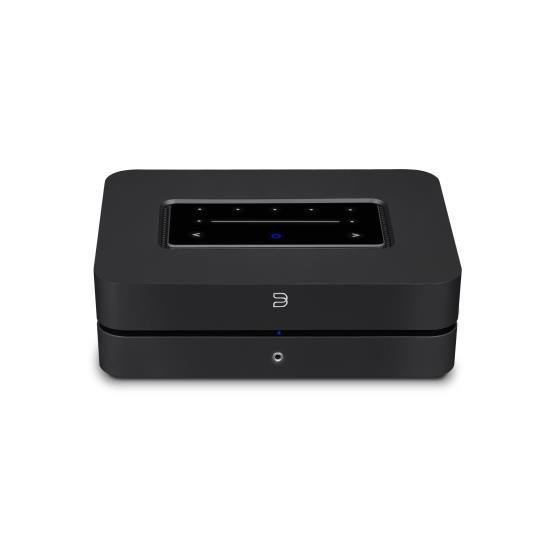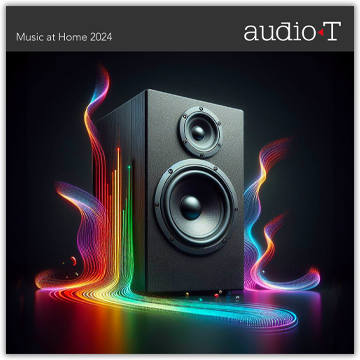What sounds better: streaming or CD?
/It’s a good question and one we are often asked. And, as with much else in hi-fi, the answer is (you guessed it) not straightforward. We’re leaving vinyl, and its particular sound qualities, out of this blog (one for the future perhaps).
Ultimately, as with any hi-fi component, it boils down to what sounds better to you. And for that you need to listen to products before you buy. This is why Audio T stores are all equipped with demonstration rooms and we are more than happy to set-up listening sessions for our customers.
portsmouth demo room
That said, perhaps we can help shed a little light on streaming versus CDs without, hopefully, becoming too bogged down in the science…
On the face of it…
The first, most obvious, thing to note is that while standard CDs are limited to 16-bit/44kHz, high resolution (or high definition if you prefer) music is commonly streamed at 24-bit/96kHz or 192kHz.
In general terms, the more bits the greater the dynamic range. The sample rate at which the music was recorded is measured in kHz. So, 44kHz is 44,100 samples per second. A sample simply being the readings that the analogue to digital converter in the studio takes to produce a copy of the music. In general terms, the more samples the more information in the copy.
So, on paper, a high res stream will contain more information and have greater dynamic range than music played at 16-bit/44kHz. This does not necessarily mean it will sound better.
A poorly recorded or remastered track will still be a poorly recorded track regardless of the number of bits or the sample rate. In fact, a poor recording can sometimes sound worse played in high res on a good system simply because you’re hearing more of that bad recording!
Ripping
First, let’s look at streaming a CD that you have ripped to a hard disc drive, either in your computer or network attached storage drive (NAS).
Jason Gould, Brand Ambassador for Naim Audio, explains that CD players work on a system of real-time data retrieval, using error correction where required to reconstruct the digital information accurately.
If you make a bit-perfect copy of a CD then, in a quality machine like the Naim Uniti-Core, the Innuos Zen Mk3 or the Bluesound Vault 2i the streamer will not have to contend with real time data retrieval using error correction.
NAIM uNITI-cORE
“The answer relies on certain parameters being in place, but the short answer is that streaming a properly ripped CD is superior,” Jason says.
“It provides a bit perfect data package with all of the guess work taken out of error correction. The net result being a much more faithful rendition of the given music programme.”
So, says Jason, depending on the quality of the components being used you are better off making bit-perfect copies of your CD and playing via a quality streamer than using your CD player.
Streaming
But what about music played via a streaming service (e.g. Tidal or Qobuz) vs CD replay? Theoretically, a 16bit/44kHz CD is sufficient to capture all the information and frequencies that a human ear can detect, and beyond.
In this scenario it seems that a good CD player may have an edge over streaming via streaming service at 16bit/44kHz. And a good CD player may even compete well against high res streaming.
Nick Clarke, Managing Director at Cyrus Audio, says: “All things being equal then there would be no difference between a CD and a streamed 16/44 audio track. However, in the real world, not all things are equal.”
Nick explains that streamers get their data in blocks or packets that are passed over the network which is a possible source of noise. These packets are placed in a buffer for decoding. Finally, the uncompressed audio is pulled from the buffer as a continuous stream of data
“By contrast, a high quality real-time read-back CD player, such as the Cyrus Servo Evolution engine (as found in the Cyrus CDi), extracts the data from the CD as a continuous bitstream with no timing breaks,” says Nick.
Cyrus Cdi
“This is an inherently less noisy process than the block processing required in all streamers. Even higher resolution playback can be affected in this way.”
“Not all CD players operate like that”, adds Nick. “Some use a computer USB drive and treat the disc as a data file, and work similar to a streamer, bringing with it the same noise and timing issues. The advantage is that this process allows the player to read lower quality or heavily damaged discs as there is sufficient time between the block processing to inter-populate the missing information.”
Other factors
Of course streaming comes with huge benefits in terms of sheer convenience and being able to explore a vast library of music. Then again if you subscribe to a streaming service you will never own the tracks and albums, unless you buy the music. Added to which, for many, choosing and listening to a CD while reading the sleeve notes is more of a musical occasion, akin to playing a record.
Ashton Wagner, Electronics Design Coordinator at Rega Research Ltd, sums it up well: “Assuming we are starting with the same 1s and 0s then, the only other way we can get any changes is in how we treat the 1s and 0s on their way to our ears.
“But a big part of the hi-fi hobby for me is collecting, listening to, and cataloguing different versions of albums, both on vinyl and digital (I’m a hoot at parties, I swear).
“The subjective differences in sound quality are sometimes subtle and sometimes considerable. Restricting oneself to either CD or streaming often removes options.”
Wiim Pro
Conclusion
The advent of CDs in the 1980s was widely thought to spell the end for records. And yet 40 years later, vinyl not only remains popular among hi-fi enthusiasts but has undergone a resurgence in popularity, including among younger generations.
There is little reason to think that, even as streaming technology and equipment improves, streamed music will mean the end for CDs any time soon. Indeed, according to recent reports, CD sales rose in 2023 for the first time in two decades.
CDs offer a different listening experience and, in the real world, a good CD player can more than hold its own against music streamed at 16-bit/44kHz, and even give high res streaming a run for its money.
Ripping your CDs and streaming them bit perfectly may offer some sonic advantages over playing them live, as it were. Storing your CDs digitally may also make playback more convenient and will allow you to declutter.
Streaming a well-produced track in high res 24bit/96kHz, or higher, via a good quality streamer will tend to provide more musical information than the same track streamed at 16/44 or played on a standard CD.
Audiolab 6000N play
You may be able to hear that difference. But whether it sounds ‘better’ is another matter.
Jason, at Naim, says: “The caveat to this is that 44.1 and high res, is best listened to, when downloaded from the chosen site, Qobuz and Tidal, for example. Bit rates aren’t always consistent when streamed on the ‘fly’.
“When engaging in 44.1, we believe that ripped compact disc is still best and typically native high resolution recordings favoured over remastered versions of earlier recordings.”
Options
Streaming is becoming ever more popular in the hi-fi community, driven in part by the number of quality products available on the market.
If you’re just starting out with streaming then check out the Wiim Mini, Wiim Pro, Wiim Pro Plus or a Bluesound Node 3 or Audiolab 6000N Play. Great options for a streamlined streaming system include the Wiim Amp and the Bluesound Powernode 3, in both cases you only need to hook up a pair of speakers.
Bluesound Powernode 3
There are many other great streaming products available and you can check these out on the Audio T website.
If you want to audition any of our streamers then please call us on 02392 663604 or email us at portsmouth@audio-t.co.uk
Thanks for reading.
Alan - Audio T Portsmouth
If you have any questions about any of the equipment featured in this article, or any other Hi-Fi or home cinema enquiries, be sure to Contact Us
If you’ve enjoyed this, why not go ahead and read some more of our other blogs, and be sure to follow us on our social media channels below…













